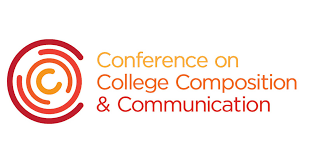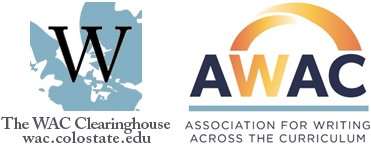Giving Feedback to Writers
Resources for Teaching Writing
- Composing Effective Writing Assignments
- Scaffolding Writing to Support Student Learning
- Creating Assignments for Miami Plan Capstone Courses
- Teaching Literature Reviews
- Using Threshold Concepts to Design Assignments and Courses
- Teaching Grammar Rhetorically
- Structuring Purposeful Group & Team Work
- Mentoring Graduate Writers
Giving Feedback to Writers
Providing feedback to students is one of the most interpersonal activities in any writing course (online or face-to- face), and therefore is one of the most impactful ways to develop your presence in your course and build relationships with your students. Sometimes, however, our students can feel confused by our comments, and we may not exactly convey what we wish for them to understand. In this resource, we offer recommendations following best practices in providing feedback to writers, which oftentimes occurs textually in the form of written feedback but might also be delivered orally.
First, here are some general principles and best practices for responding to student writing that applies to all course modalities:
- match your feedback to the stage of writing;
- keep comments to a minimum; don’t over comment;
- focus comments on your assignment goals and values;
- don’t mark all surface errors;
- provide positive as well as constructive feedback
- Be strategic about your time as you develop your writing assignments and opportunities for various types of feedback. You’ll be communicating through writing more often -- in discussion boards, emails, short assignments -- so make student deadlines and instructor response times realistic. And, remember that you don’t have to respond to everything!
- For low and high-stakes assignments alike, peers can respond and provide valuable feedback to each other (see Engaging Students in Effective Peer Response).
- You can encourage students to use the Howe Writing Center at any stage of the writing process to get feedback from a trained peer consultant.
- Lastly, if there is a common issue that students are having, rather than responding individually you can send an email, Canvas announcement, handout, or quick video.
- Engage students in a dialogue to build relationships. It can be helpful to open a dialogue by asking students to include a reflective piece of writing such as a Dear Reader note or Writer’s Memo as the first page of their document with each draft they submit to you. This helps you find out how the student feels about their paper, what they want feedback on, and other questions that interest you about their learning and their writing. Alternatively, you can ask students to make those points by inserting comments in their Word or Google doc which you can then respond to. If you conference synchronously with students, you can discuss the student’s agenda at the beginning of the session. For Dear Reader letter examples and prompt ideas see the following:
- Sommers, Responding to Student Writers
- Hewett, The Online Writing Conference
- Our Helping Writers Identify Goals handout
- Use names when writing feedback. You can build connections by addressing students by name in your opening or ending comment. Likewise, by signing your name at the end you make yourself human and present.
- Keep an encouraging, respectful tone. The purpose of commenting is to teach the student something, encourage them to revise, and instill confidence in them to make those revisions. Without the normal social cues of face-to-face interaction, an unintentionally critical or sarcastic tone in written comments can create defensiveness rather than learning and cause students to retreat rather than engage. For example, saying in person “Tell me the ‘So What’ of your argument” comes across quite differently when written as “So what?” in the margin. Using “I” statements for most feedback can help cultivate this tone. For example, “I’m having trouble following this line of reasoning,” or “This is unclear because,” not “You’ve lost me here”. Likewise, try to avoid “you” except for praise. For example, “Your thesis is clear.” Finally, pay attention to your own experiences when giving feedback. Avoid commenting when you’re tired and stop if you’re feeling frustrated.
- Convey interest. To convey interest in both your student and their writing, use first person and write genuinely about how you responded to the content. You can also ask open-ended probing questions that elicit deeper thinking (these questions usually start with how or the 5 Ws).
- Be concise, explicit, and direct. Since most correspondence in an online course is textual and there’s no real-time interaction to clear up confusion, clarity becomes critical for all your communications. Research shows that students often misinterpret indirect feedback as a suggestion and fail to take corrective action. Therefore, using direct language to inform, direct, or elicit information can lead to more substantive revisions. For example, an instructor wants a student to “Add more details to make the description vivid,” but in an attempt to soften the direct command, they write, “You might consider adding additional details to make this more vivid.” If you are truly letting the student decide, make your suggestion clear (e.g., I suggest that you add more details…” “You could add...”.)
- Respond with reason. In order to be especially clear and to provide a lesson in your response, consider using or adapting Hewett’s What, Why, How, Do model (2015).
- Describe what the issue is
- Explain why it is an issue (quite often it’s how or why you responded to it)
- Explain how the student can address it
- Encourage the student to do something with your feedback (apply to the rest of the paper, practice in one paragraph, revise, etc.)
- Be responsive to student needs. Remember that responding is also teaching, and learning is doing! After giving online feedback and determining what will help your student most to improve, you might provide a mini-lesson within the feedback or provide a lesson for the entire class that you can present in text, slides, or a short video. Over time, you can build up a repository of responses and mini-lessons to save time when responding.
Sources and Further Reading
- Borgman, Jessie and Casey McArdle. Personal, Accessible, Responsive, and Strategic: resources and strategies for online writing instructors. Fort Collins: The WAC Clearinghouse, 2019.
- Hewett, Beth L. The Online Writing Conference: A guide for teachers and tutors. Boston: Bedford/St. Martin’s, 2015.
- Hewett, Beth L. and Kevin Eric DePew, Eds.. Foundational Practices of Online Writing Instruction. Fort Collins: The WAC Clearinghouse, 2015.
- Shapiro, Mike. “How to Talk to a Student Who Isn’t There: Ineffective and effective practices for commenting on student writing.” Another Word: from the Writing Center at the University of Wisconsin. 2014.
- Sommers, Nancy. Responding to Student Writers. Boston: Bedford/St. Martin’s, 2013. (pdf available on HCWE Canvas Site for Faculty)
- The Online Writing Instruction Community. http://www.owicommunity.org/. More information about the PARS model, sample syllabi and assignments, and many other resources.
- Warnock, Scott. Teaching Writing Online: How & Why. Urbana: NCTE, 2009.
Howe Center for Writing Excellence
The mission of the HCWE is to ensure that Miami supports its students in developing as effective writers in college, and fully prepares all of its graduates to excel as clear, concise, and persuasive writers in their careers, communities, and personal lives.

